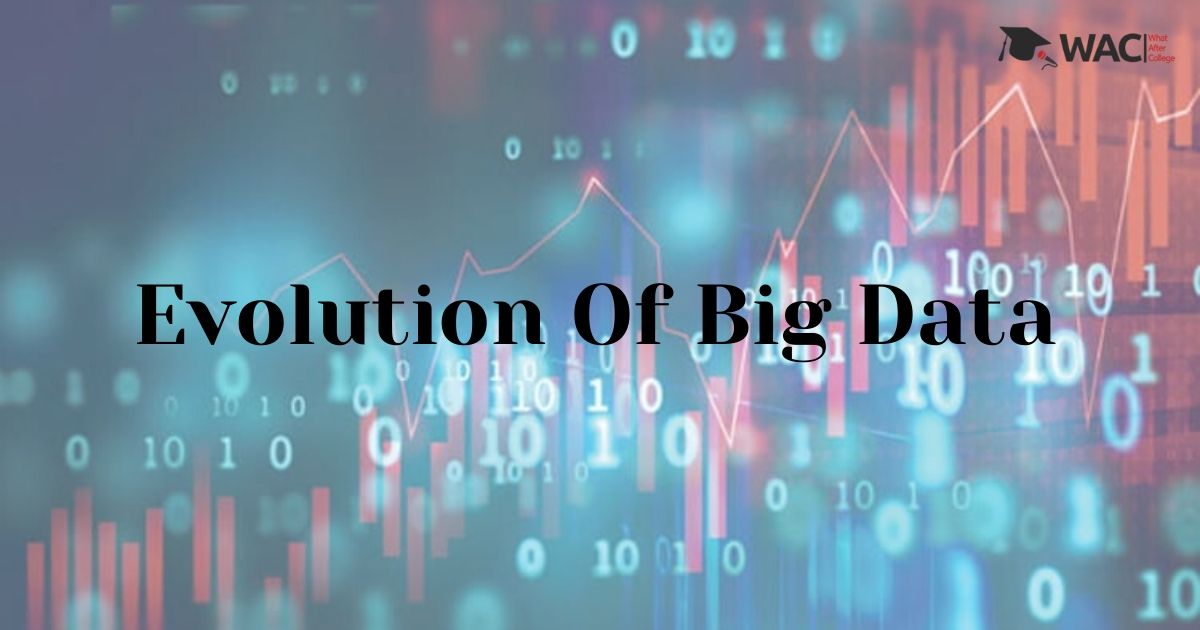The evolution of Big Data includes various fundamental steps for its foundation. Big Data is a relative term. It depends on who is thinking about it. Big Data to giants like Amazon, Facebook, and Google is different from that of a medium-sized retail company. However, it stills remains big in the eyes of those who are handling it.
Such steps to the evolution of Big Data involve the development of smartphones, computers, the internet, and IoT equipment to provide data. Credit cards have also had an impact, by providing continuously increasing large amounts of data, and above all, social media has changed the nature of data in new and exciting ways. The evolution of modern technology, as we know it today is directly connected with the evolution of Big Data.
Foundations of Big Data
The first known case of the use of Big Data is from the U.S. Census in 1890. It would have taken them to process 10 years all the collected data if it hadn’t been for a young man; he invented the Hollerith Tabulating Machine, and the data was processed within 3 months. labor was reduced to 3 months.
Another such example is during World War II, the British designed a machine that could scan patterns in messages intercepted from the Germans. They were desperate to crack Nazi codes.
Above all, It is believed that these events promoted the formation of the National Security Agency in the US. They were assigned to decrypt the intercepted messages during the cold war. By this time, computers had evolved to collect and process data, i.e. they were operating automatically, and independently.
PCs and The Internet
By 1989, the infrastructure of ARPANET had started to develop. However, the system wasn’t as fast and efficient as some of the newer networks. It was eventually shut down, but its creation eventually led directly to the Internet.
Personal Computers came to the market in 1977, this was the first time microcomputers were introduced, and they were a stepping stone that helped in the evolution of the internet and Big Data. PCs could be used by single individuals, connected to a large processor. After the introduction of microprocessors, PCs were affordable and available for consumer class. Now, they provide internet access to billions of individuals all over the world.
In 1989, the World Wide Web was introduced. The web is a place where all the resources and links to those resources are stored. It’s accessible via the internet. This system allowed for the transfer of audios, videos, pictures, books. World Wide Web is free for everyone to use and develop. This played a key role in the evolution and effect of the Web on Big Data.
The Internet of Things (IoT)
The concept of IoT was given its name in 1999. Over time, it has evolved to include many different technologies, wireless communication, using the internet, micro-electromechanical systems (MEMS), and embedded systems. All of these technologies transmit data about the person who is using them. GPS, Automation, and others too support the IoT.
However, IoT has a major disadvantage, it can make computer systems vulnerable to hacking, for example, In 2016, there was a mass hacking attack, in which the hackers tried to disintegrate major portions of the internet using IoT. The initial response to this has been to develop Machine Learning and AI that is focussed on security issues.
Internet Growth and Computing Power
Ever since the internet was introduced to the public, it has continued to evolve, and PCs became more flexible and powerful.
In 2005, Big Data, which had been used without giving it a particular name, was finally labeled. It was referred to as a large set of data that was almost impossible to store and process using the traditional analytical tools available at the time. Hadoop, a program to handle Big Data, was also invented in 2005. Hadoop has played a big role in the Evolution of Big Data, since, it could process structured as well as unstructured data from various digital sources. Other technologies have also been invented since then.

All you need to know about Big Data
| Introduction to Big Data | Career Options after Big Data |
| 4 V’s of Big Data | Big Data for Business Growth |
| Uses of Big Data | Benefits of Big Data |
| Demerits of Big Data | Salary after Big Data Courses |
Learn Big Data
| Top 7 Big Data University/ Colleges in India | Top 7 Training Institutes of Big Data |
| Top 7 Online Big Data Programs | Top 7 Certification Courses of Big Data |
Learn Big Data with WAC
| Big Data Webinars | Big Data Workshops |
| Big Data Summer Training | Big Data One-on-One Training |
| Big Data Online Summer Training | Big Data Recorded Training |
Other Skills in Demand
| Artificial Intelligence | Data Science |
| Digital Marketing | Business Analytics |
| Big Data | Internet of Things |
| Python Programming | Robotics & Embedded System |
| Android App Development | Machine Learning |

